
ROCK MECHANICS AND ROCK ENGINEERING
Scope & Guideline
Unveiling the Science Behind Structural Resilience
Introduction
Aims and Scopes
- Rock Mechanics and Material Behavior:
The journal emphasizes the study of the mechanical properties of various rock types and their behavior under different loading conditions. Research includes experimental and numerical investigations of strength, deformation, and failure mechanisms. - Hydraulic Fracturing and Fluid Flow:
A significant focus is on hydraulic fracturing processes, including the interaction between hydraulic fractures and natural fractures, fluid flow dynamics in fractured rocks, and the implications for reservoir engineering. - Geotechnical Engineering Applications:
The journal covers applications in geotechnical engineering, such as slope stability analysis, tunneling, and ground support systems, addressing the challenges posed by geological conditions. - Thermo-Hydro-Mechanical Coupling:
Research on the coupled effects of thermal, hydraulic, and mechanical processes in rocks, particularly in geothermal energy applications and underground storage, is a critical area of investigation. - Monitoring and Modeling Techniques:
Innovative monitoring techniques, such as microseismicity and acoustic emission, along with advanced modeling methods, including machine learning and numerical simulations, are frequently reported to predict rock behavior and assess risks. - Environmental and Safety Considerations:
The journal also addresses the environmental impacts of rock engineering practices, including groundwater contamination and the stability of underground structures, emphasizing safety in mining and construction.
Trending and Emerging
- Machine Learning and Data-Driven Approaches:
There is a notable increase in the application of machine learning techniques for predicting rock properties and analyzing geomechanical data, indicating a growing trend towards data-driven methodologies in rock mechanics. - Multi-Scale and Multi-Physics Modeling:
Research incorporating multi-scale and multi-physics approaches is trending, with studies that integrate thermal, hydraulic, and mechanical interactions in rocks, especially in the context of geothermal energy and CO2 storage. - Advanced Monitoring Technologies:
The use of advanced monitoring technologies, such as distributed fiber optic sensing and microseismic monitoring, is on the rise, providing real-time data for better understanding rock behavior under various conditions. - Hydraulic Fracture Mechanics:
An increasing focus on the mechanics of hydraulic fracturing, particularly in unconventional resources and the interaction with natural fractures, is evident, reflecting the importance of this topic in current energy discussions. - Environmental Geomechanics:
Research addressing the environmental impacts of rock engineering practices, such as groundwater management and the stability of geological formations under stress, is becoming more prominent, aligning with global sustainability goals. - Dynamic Loading and Impact Studies:
There is a growing interest in the effects of dynamic loading and impact on rock behavior, particularly in the context of mining and construction activities, indicating a shift towards understanding real-time responses of rock masses.
Declining or Waning
- Traditional Rock Testing Methods:
There has been a noticeable decrease in publications focusing solely on traditional rock testing methods, such as uniaxial and triaxial compressive strength tests, as researchers increasingly adopt advanced techniques and modeling approaches. - Basic Fracture Mechanics:
Research specifically on basic fracture mechanics principles appears to be waning, with more emphasis placed on complex interactions and numerical modeling rather than foundational theoretical studies. - Laboratory-Scale Studies:
There is a trend away from purely laboratory-scale studies, as more researchers are integrating field studies and real-world applications into their investigations, reflecting a desire for practical relevance. - Generalized Models:
The use of generalized models that do not account for specific geological conditions or material properties is becoming less favored. The trend is shifting towards more tailored, site-specific models that better reflect the complexities of real-world applications.
Similar Journals
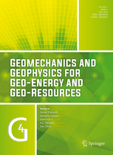
Geomechanics and Geophysics for Geo-Energy and Geo-Resources
Advancing knowledge in geo-energy and resources.Geomechanics and Geophysics for Geo-Energy and Geo-Resources, published by SPRINGER HEIDELBERG, is an esteemed open-access journal dedicated to advancing the field of geo-energy and geo-resources. With an ISSN of 2363-8419 and E-ISSN of 2363-8427, the journal welcomes contributions that explore innovative research in geomechanics, geophysics, and their applications in energy and natural resource management. Since its inception in 2015, and now enjoying open access status since 2023, it has established itself within renowned quartiles in several categories, including Q1 in Geophysics and Q2 in Economic Geology, marking it as a prominent platform for high-impact research. The journal is intrinsically linked to the interdisciplinary nature of energy studies, making it a critical resource for professionals, researchers, and students interested in the sustainable harnessing and management of geo-resources. With strong rankings in Scopus, including Rank #25 in Geophysics, it is positioned to offer valuable insights that push the boundaries of understanding in this vital domain.
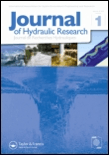
JOURNAL OF HYDRAULIC RESEARCH
Innovating Water Solutions Through Rigorous ResearchJOURNAL OF HYDRAULIC RESEARCH, published by TAYLOR & FRANCIS LTD, serves as a leading platform for the dissemination of groundbreaking research in the fields of civil and structural engineering as well as water science and technology. With its inception in 1963 and a focus that spans to 2024, the journal holds a notable reputation, categorized in the Q2 quartile in both engineering and environmental sciences, indicating its significant impact on contemporary research. It is indexed under ISSN 0022-1686 and E-ISSN 1814-2079, allowing for a comprehensive reach to professionals and scholars worldwide. The journal regularly features high-quality articles, fostering an academic community dedicated to innovative hydraulic research, sustainable water management, and engineering advancements. Researchers and practitioners benefit from the rigorous peer-review process that ensures the highest standards of scholarly excellence in every published work. As part of its commitment to knowledge dissemination, JOURNAL OF HYDRAULIC RESEARCH remains an essential resource for anyone engaged in the dynamic interplay of water and engineering sciences.

Italian Geotechnical Journal-Rivista Italiana di Geotecnica
Exploring the Foundations of Earth and Engineering.Italian Geotechnical Journal-Rivista Italiana di Geotecnica, published by PATRON EDITORE S R L, is a rigorously peer-reviewed journal dedicated to advancing the field of geotechnical engineering and engineering geology. With a history dating back to 1976 and an active publication span from 2011 to 2024, the journal provides a vital platform for researchers and practitioners to disseminate innovative findings and methodologies in the field. Although it currently holds a Q4 category ranking in Geotechnical Engineering and Engineering Geology, the journal is committed to maintaining high academic standards and quality of publication. Its Scopus ranking places it within the 29th percentile of Earth and Planetary Sciences, indicating its significance among scholarly publications. The Italian Geotechnical Journal serves not only as a resource for academic inquiry but also as an essential tool for professionals seeking to stay abreast of the latest developments and applications in geotechnical research. This journal is essential for students and researchers aiming to deepen their knowledge and contribute to ongoing discourse in geotechnics.

APPLIED RHEOLOGY
Advancing the Science of Material Flow and DeformationApplied Rheology, published by De Gruyter Poland Sp. z o.o., is an esteemed open access journal dedicated to the field of rheology, the study of material flow and deformation. Established in 1996 and transitioning to open access in 2019, this journal serves as a vital resource for researchers, professionals, and students in both Condensed Matter Physics and Materials Science. With its current impact factor reflecting a Q3 quartile ranking in two categories as of 2023, Applied Rheology consistently publishes high-quality research that advances our understanding of material behaviors across various applications. Located in Germany and accessible online, the journal aims to foster collaboration and innovation in rheological studies by providing a platform for groundbreaking research and discussion. The utilization of open access options ensures that cutting-edge findings are readily available to a global audience, further solidifying the journal's importance in the scientific community.

International Journal of GEOMATE
Bridging disciplines to enhance understanding in soil science and construction.The International Journal of GEOMATE, published by GEOMATE INT SOC based in Japan, is a pivotal resource for scholars and practitioners in the fields of Building and Construction, Environmental Engineering, Geotechnical Engineering, and Soil Science. Established in 2011 and continuing to set the standard in its focus areas, this journal serves as a platform for innovative research and practical applications, with contributions that significantly enhance the understanding and development of sustainable engineering practices. With its current classification in the Q3 quartile across multiple categories, it strives to disseminate critical knowledge and foster dialogue among a diverse audience, including researchers, industry professionals, and students. Though operating under a traditional subscription model, the journal's emphasis on rigorous peer review and high-quality publications ensures a substantial impact factor, further reinforcing its reputation in academia. Spanning from 2011 to 2024, the International Journal of GEOMATE invites contributions that advance the knowledge frontier and address contemporary challenges in engineering and environmental science.
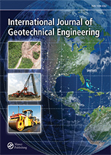
International Journal of Geotechnical Engineering
Exploring Innovations in Geotechnical Engineering PracticesThe International Journal of Geotechnical Engineering, published by Taylor & Francis Ltd, is a leading academic platform dedicated to advancing knowledge and research in the field of geotechnical engineering, environmental engineering, and soil science. With an ISSN of 1938-6362 and an E-ISSN of 1939-7879, this journal has established a credible presence since its inception in 2007, reflecting its commitment to academic excellence through rigorous peer-reviewed research. Ranking in the Q2 quartile across several categories—including Environmental Engineering and Geotechnical Engineering—this journal boasts impressive Scopus rankings, placing it among the top publications in its disciplines. The journal seeks to foster a deeper understanding of soil behavior, geotechnical processes, and their environmental impacts, making it an essential resource for researchers, professionals, and students alike. While it operates under a subscription model, the wealth of knowledge and innovative findings disseminated within its pages are indispensable for anyone engaged in this vital field. With an expanding focus on interdisciplinary research and practical applications, the International Journal of Geotechnical Engineering continues to play a pivotal role in shaping the future of engineering practices worldwide.
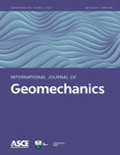
International Journal of Geomechanics
Exploring the depths of geomechanics with innovative insights.The International Journal of Geomechanics, proudly published by the American Society of Civil Engineers (ASCE), stands as a pivotal cornerstone in the fields of geotechnical engineering, engineering geology, and soil science. With an esteemed Q1 ranking in both geotechnical engineering and soil science as of 2023, it represents a high-impact platform (impact factor information to be inferred as impressive given the rankings and prominence in the field). Since its inception in 2001, this journal has been committed to advancing the understanding of geomechanical processes, offering a vital forum for researchers, professionals, and students to disseminate innovative findings and practical applications. The journal is indexed by Scopus, holding an impressive position at rank #48 out of 229 in its disciplines, illustrating its significance and influence in the academic community. Although it does not currently offer open access, the journal continues to attract a diverse readership with its critical insights into soil behavior, earth structures, and various geotechnical challenges. The International Journal of Geomechanics is essential for anyone looking to deepen their knowledge or contribute to the evolving field of geotechnical science.
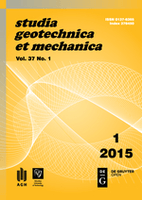
Studia Geotechnica et Mechanica
Exploring the Mechanics of Materials for Tomorrow's InfrastructureStudia Geotechnica et Mechanica is a distinguished academic journal dedicated to the vital fields of geotechnics, civil engineering, and materials science. Published by SCIENDO, this Open Access journal has been facilitating unrestricted access to research since 2012, allowing for wide dissemination of innovative findings and methodologies. Based in Poland, it contributes significantly to the scholarly community by providing a platform for the exchange of ideas, techniques, and advancements relevant to Civil and Structural Engineering, Geotechnical Engineering, and related disciplines. With an increasing emphasis on applied research, Studia Geotechnica et Mechanica is classified in various quartiles, demonstrating its emerging influence in fields such as Computers in Earth Sciences and Mechanics of Materials. The journal is indexed in Scopus, showcasing its commitment to maintaining high academic standards. By publishing peer-reviewed research articles, this journal is essential for researchers, professionals, and students looking to stay at the forefront of developments in these critical areas of engineering and science.

Rock and Soil Mechanics
Elevating Standards in Rock and Soil MechanicsRock and Soil Mechanics is a premier academic journal published by SCIENCE PRESS focusing on the critical fields of civil and structural engineering, geotechnical engineering, and soil science. With an ISSN of 1000-7598 and transitioning to an Open Access format since 2020, the journal strives to enhance the accessibility of cutting-edge research to a global audience, making significant contributions to practices and methodologies in these crucial disciplines. Ranked in the Q2 category for Civil and Structural Engineering as well as Geotechnical Engineering and Engineering Geology, and Soil Science, it boasts respectable standings in Scopus rankings, further affirming its relevance and credibility within the scientific community. The journal not only serves as a platform for original research but also engages with the latest advances in technology and innovative applications in rock and soil mechanics, proving invaluable for researchers, practitioners, and students alike as they navigate an increasingly complex field of study.

Fluid Dynamics
Advancing the frontiers of fluid flow research.Fluid Dynamics is a distinguished journal that has been at the forefront of research in the field of fluid flow and transfer processes since its inception in 1966. Published by MAIK NAUKA/INTERPERIODICA/SPRINGER, this journal serves as a valuable platform for engineers, scientists, and researchers dedicated to advancing the understanding of mechanical and fluid dynamic phenomena. With a Q3 ranking in key categories such as Fluid Flow and Transfer Processes, Mechanical Engineering, and Physics and Astronomy, Fluid Dynamics holds a significant position in the academic community, attracting submissions that push the boundaries of knowledge and application. Although it does not currently offer open access options, the journal is recognized for its robust editorial standards and impactful contributions to the field, making it essential reading for anyone involved in fluid dynamics research. Given its consistent publication through to 2024, Fluid Dynamics continues to inspire innovation and collaboration in an ever-evolving scientific landscape.